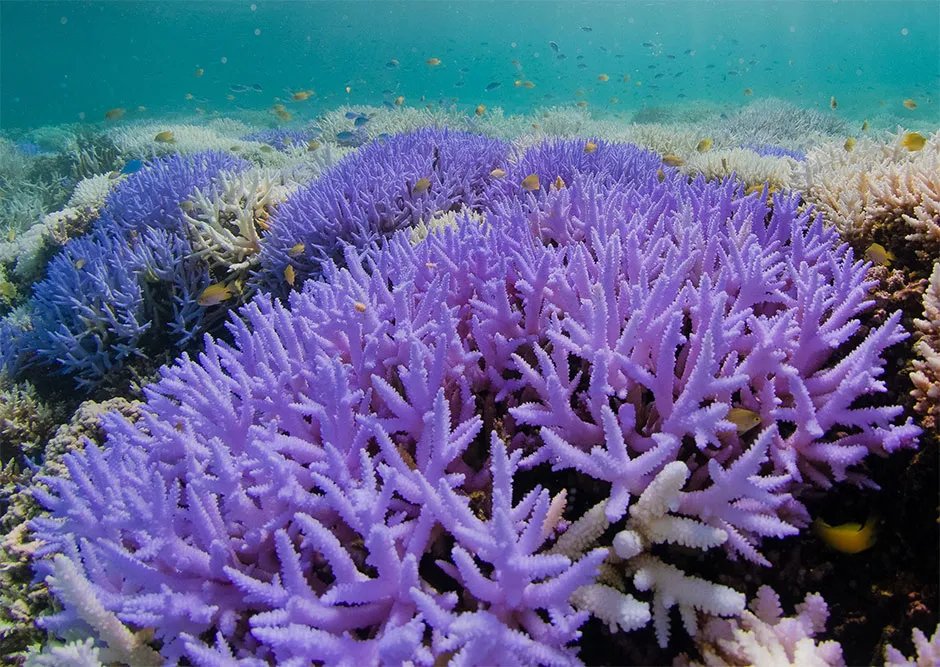Some corals emit a “sunscreen” in the form of a dazzling colourful display to protect them from rising sea temperatures, according to new research.
Scientists at the University of Southampton believe that the corals emit the bright neon colours in a fight for survival.
The team from the university’s coral reef laboratory explained in a report published in the journal Current Biology that many coral animals live in a fragile symbiosis with algae embedded in their cells.
Read more about corals:
- 'Heat tolerant' microalgae could save coral reefs from bleaching
- AI uses deep learning to find heat-resistant coral reefs
A rise in water temperature of just 1°C can cause this relationship to break down causing the algae to be lost leaving the coral’s limestone skeleton exposed through its transparent tissue leading to the fatal condition of coral bleaching.
But the study found that in mild or brief warming incidents, some coral produced a type of sunscreen which takes the form of the colourful display which encourages the algae to return in an “optical feedback loop”.
Without their algae, coral can be damaged by excessive light energy bouncing around, unabsorbed by the symbionts. These conditions are difficult for algae, so the coral produces this bright colour to make itself a more appealing home.

Professor Jörg Wiedenmann explained: “Our research shows colourful bleaching involves a self-regulating mechanism, a so-called optical feedback loop, which involves both partners of the symbiosis.
“In healthy corals, much of the sunlight is taken up by the photosynthetic pigments of the algal symbionts. When corals lose their symbionts, the excess light travels back and forth inside the animal tissue, reflected by the white coral skeleton.
"This increased internal light level is very stressful for the symbionts and may delay or even prevent their return after conditions return to normal.
Read more about algae:
- 18 amazing algae facts to help you enjoy, understand, and respect one of the world’s most important organisms
- Billion-year-old seaweed fossil suggests algae is 200 million years older than we previously thought
Wiedenmann added: “However, if the coral cells can still carry out at least some of their normal functions, despite the environmental stress that caused bleaching, the increased internal light levels will boost the production of colourful, photoprotective pigments.
“The resulting sunscreen layer will subsequently promote the return of the symbionts. As the recovering algal population starts taking up the light for their photosynthesis again, the light levels inside the coral will drop and the coral cells will lower the production of the colourful pigments to their normal level.”
Dr Cecilia D’Angelo, lecturer of molecular coral biology at Southampton, said: “Bleaching is not always a death sentence for corals, the coral animal can still be alive. If the stress event is mild enough, corals can re-establish the symbiosis with their algal partner.
“Unfortunately, recent episodes of global bleaching caused by unusually warm water have resulted in high coral mortality, leaving the world’s coral reefs struggling for survival.”
Reader Q&A: How do corals eat?
Asked by: Mary Leonard, Chelmsford
Corals are communal animals related to sea anemones and jellyfish. Like their cousins, they catch tiny animals (called zooplankton) using stinging tentacles that surround the single body opening that acts as both a mouth and anus.
Many corals also contain symbiotic algae called zooxanthellae. The zooxanthellae allow them to get some extra energy through photosynthesis.
Read more:
